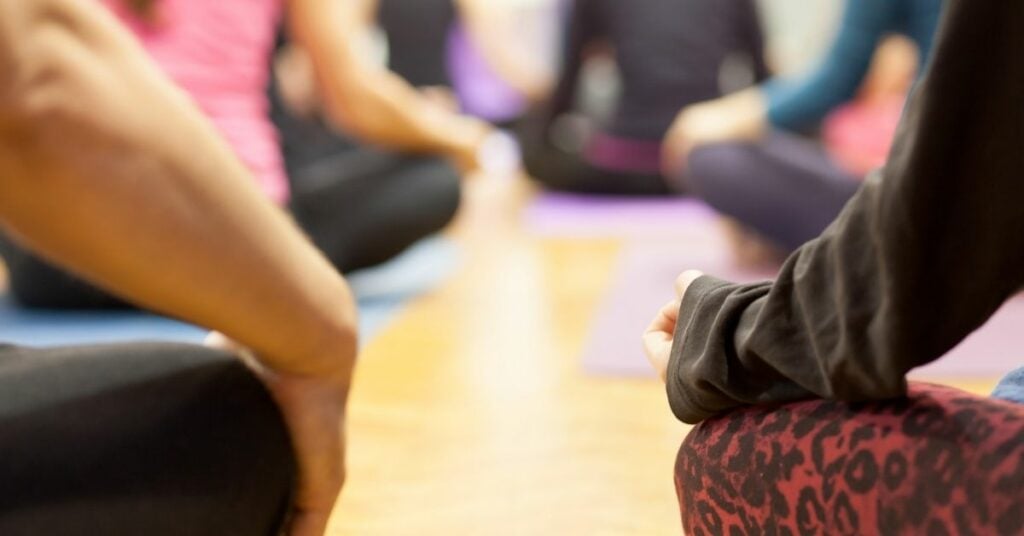Meditation: Types, benefits, and techniques for beginners
Reviewed by Diane Warns, PT

What Is Meditation?
Meditation is the practice of intentional presence and awareness. It is an invitation to bring attention to the present moment, often by focusing on the breath.


Meditation has been practiced for millennia across the globe. It is often tied to other religious practices or spiritual disciplines, such as worship or prayer. However, meditation can also be practiced outside of the context of faith. It offers mental health benefits for people from all walks of life.
7 Reasons to Meditate
- Relax: Certain meditations, such as the body scan meditation, can help relax your body and alleviate stress and tension.
- Reflect: Meditation offers the perfect opportunity to reflect on specific thoughts, chants, prayers, or mantras.
- Regulate: The practice of meditation can help you learn how to regulate your emotions and reframe negative or unhelpful thoughts.
- Reconnect: Meditation can help you reconnect with your sense of self, your relationship to others, and your place in the universe.
- Redirect: With meditation, you can learn to redirect your energy away from anxious or unhelpful thoughts and toward the present moment instead.
- Remember: The regular practice of meditation can remind you to practice compassion toward yourself and others.
- Repeat: Learning how to meditate on a regular basis can help you learn to develop other beneficial disciplines that require repetition, such as exercise, music, cooking, or other hobbies.
What Is Mindfulness?
Mindfulness is a way of being that involves paying intentional, nonjudgmental attention to the present moment with both your mind and your body.
Naturally, meditation and mindfulness go hand in hand. Think of meditation as one expression of mindfulness. There are many other ways to practice mindfulness other than traditional meditation, such as mindful eating, gentle movement, and mindful awareness of daily tasks.
Like meditation, mindfulness also has a long history of practice among communities of faith, especially in Buddhism, Hinduism, and other Eastern religious traditions. It was introduced to Western, secular audiences in the 1970s by Jon Kabat-Zinn, creator of mindfulness-based stress reduction (MBSR).
How to Meditate in 5 Easy Steps
- Settle: Find a position that is comfortable for you. That could mean sitting cross-legged on the floor, sitting on your couch, or lying in your bed.
- Focus: Start by focusing on your breath. Pay attention as you inhale and exhale. Other meditative practices may focus on words, phrases, or prayers, but breath is a great place to start, especially for beginners.
- Notice: Keep your attention actively on your breath. Notice where it goes, how your body feels, what happens if you breathe more deeply. The point is not for your mind to go blank—it’s to be mindful in the present moment.
- Return: Your mind will likely wander from your breath. That’s okay. When you notice your mind has wandered, simply return to your breath without judgment or condemnation.
- End: You may choose to set a specific amount of time for your practice before you begin, or you can end when you feel it is time. It’s important to notice how you feel before disengaging. Consider ending with kind thoughts or gratitude toward yourself for meditating today.
Common Types of Meditation
There are many different types of meditation practiced in a variety of forms. Some follow more traditional meditative practices, while others offer more creative approaches to incorporating meditation into modern life.
1. Mindful Meditation
Many forms of meditation are rooted in the seven principles, or “attitudes,” of mindfulness, as defined by Kabat-Zinn:
- Non-judging: Observing yourself and others without judgment
- Patience: Allowing life to unfold at its own pace without rushing
- Beginner’s mind: Adopting an open-minded posture and seeing everything as if for the first time, without any preconceived notions
- Trust: Believing in yourself and understanding your own agency
- Non-striving: Giving up the constant desire for and pressure of achievement
- Acceptance: Seeing life as it is in the present moment instead of denying or resisting what is occuring
- Letting go: Giving up that which prevents you from living a mindful life
Body Scan Meditation
Body scanning is a form of mindful meditation in which you bring attention to different body parts, typically starting with your head or toes and working up or down your body. During the body scan, you’re encouraged to notice the physical sensations of each body part without passing judgment on what you notice or feel. Many people use body scanning in an effort to overcome insomnia.
Loving-Kindness Meditation
Another popular meditation based on mindfulness is the loving-kindness meditation. During this meditation, you focus on phrases rooted in compassion toward yourself and others, such as:
- May I be safe. May you be safe.
- May I experience love. May you experience love.
- May I feel at peace. May you feel at peace.
You can even extend your compassionate well-wishes to specific groups of people (e.g., “May my child’s teachers feel at peace”) or named individuals in your life (e.g., “May my partner experience love”). It’s a good idea to start with people for whom you already care deeply, then move on to people you may not know very well or care about. Finally, try offering compassionate phrases toward specific people you may find difficult to get along with or actively dislike.
2. Spiritual Meditation
Perhaps the most historical form of meditation is spiritual meditation. Regardless of whether or not you belong to a community of faith, you can use spiritual meditation as a way to reflect on and participate in the interconnectedness of the world.
During spiritual meditation, you may pray directly toward a specific person, being, or concept, or you may repeat a mantra to no one in particular. What matters is focusing on the words you choose and the meaning you find in them.
Many people of faith use verses from sacred texts or songs as prayers or mantras to guide their meditative practice. A more secular approach may be to meditate on a meaningful quote from a book or a lyric from a favorite song.
3. Movement Meditation
How you move your body is an important part of your meditative practice. Some people strive to ground themselves in their meditation by sitting a certain way or placing their hands in a specific gesture. However, others may find it easier to focus by moving their bodies actively in the form of a movement meditation.
Yoga
Yoga is a popular form of movement meditation. Many different types of yoga are already based in meditative movement. The yoga sutras were compiled between 400–100 BCE and set out a philosophy for calming and controlling the mind via the eight-limbed practice of yoga.
Keep in mind that some yoga classes in the West may be structured more as an exercise course than a meditative practice. It’s important to be intentional if you want to turn a typical yoga session into an actual meditation.
Walking Meditation
You can also turn walking into a form of movement meditation. Like yoga, it’s important to bring intentionality and mindfulness into what could just be a form of exercise. Here are some simple steps to help you get started:
- Choose a location: Consider walking somewhere more peaceful, such as a park or nature preserve, to help you connect to something larger than yourself. Remember, though, that peace can be achieved even while walking in a city or walking through your home.
- Be present: Instead of listening to music or letting your mind race with thoughts, try to focus on your breath while you walk.
- Pay attention to your five senses: Take turns noticing each of your five senses. How many animals can you see? What do you hear, and where does each noise come from? How does the air smell or taste? How does your jacket feel on your skin, or your feet feel in your shoes?
- Move with intention: Pay attention to how your body is physically moving in the world. Notice any tension in your body. Experiment with slowing down your pace or speeding up. Consider walking in a way that feels more rhythmic or intentional.
4. Guided Meditation
Guided meditation is not a unique type of meditation as much as it is a form you can apply to many different meditative practices. For example, many of the previously listed meditations, such as body scanning, prayer, or yoga, can be practiced with the help of a guided meditation.
A guided meditation is simply one in which a person verbally leads you through the meditative process. The person may be a teacher leading an in-person group, or it could be a voice on a meditation app or podcast. You can even record your own guided meditation to use at a later date.
Guides are not necessary for meditation. However, they can be particularly helpful for beginners who may appreciate someone taking them through the steps.
Meditation and Mental Health
Mental Health Benefits of Meditation
Studies have shown1 that the parts of the brain involved with emotional self-awareness, self-regulation, and attention are larger in people who meditate.
One study by a Harvard neuroscientist2 even concluded that your brain can physically change after just eight weeks of daily half-hour meditation. In particular, it showed that the amygdala (the brain’s fight-or-flight center) got smaller in patients who underwent a MBSR program that included meditation.
Meditation can help you practice mental health skills such as self-care, stress management, and self-regulation. It can help improve or alleviate the symptoms of a number of mental health concerns, including:
Does Meditation Cure Anxiety?
No, it does not. Meditation can help with symptoms of anxiety and other mental health issues, but it is not a cure. It should not be relied upon as a sole treatment method for mental illness. Instead, use meditation in conjunction with other treatments, such as therapy and medication.
Meditation and Therapy
Although meditation and therapy are different, they can be used together to help address certain mental health issues. Therapies based on or associated with meditation include:
- Mindfulness-based stress reduction (MBSR): MBSR is an eight-week program that teaches participants how to practice mindful meditation.
- Mindfulness-based cognitive therapy (MBCT): MBCT combines cognitive behavioral therapy (CBT) with MBSR. It was originally developed to treat depression.
- Somatic therapy: Certain somatic therapies may use meditation as a way of exploring the mind-body connection.
Some therapies, such as acceptance & commitment therapy (ACT) and dialectical behavior therapy (DBT), do not specifically practice meditation but are still based on the principles of mindfulness.
If you’re interested in finding a therapist that incorporates meditation and/or mindfulness into their treatment, browse our online directory.
4 Meditation Techniques for Beginners
1. Be Kind With Your Time
Are you a morning person or a night owl? Can you spare 15 minutes a day, or do you only have an extra five minutes?
It’s important to set realistic goals for yourself as you start your meditation journey. Very few people can start out with hour-long meditations every single morning at dawn.
You need to be honest about your obligations as well as your energy levels at different times of the day. There is no shame in meditating for five minutes flat on your back every night before you fall asleep.
If you really feel stretched for time, keep in mind that meditation can happen anywhere. The famous Vietnamese Buddhist monk Thich Nhat Hanh3 said, “Washing the dishes is like bathing a baby Buddha. The profane is the sacred. Everyday mind is Buddha’s mind.”
The next time you miss a meditation session, try counting your breaths over the kitchen sink. You may be surprised at how easy it is to connect to the present moment among the soapsuds.
2. Create a Meditation Area
Meditation can happen anywhere, anytime. However, many people prefer to create specific spaces for meditation. You can design a meditation room or simply create a meditation corner in an existing space.
These meditation areas become helpful, even sacred, because of the attention you place on them. It’s difficult to define a sacred space, but across multiple religions, sacred spaces tend to share similar characteristics4, such as:
- Connection with nature or beauty
- Symbolism
- Ritual celebrations or services
Your meditation practice is your ritual, so any place can be sacred. If you want to invest in the feel of your meditation area, consider choosing a spot with a nice view of nature or adding objects that symbolize relaxation and connection.
3. Take Yourself Seriously
If you want to start meditating, you should honor your intentions by taking them seriously.
Set a reminder on your phone at a specific time every day to practice. Put a note on the door to prevent your family or roommates from interrupting. Invest in comfortable pillows or blankets to create a meditation corner in your room. Allow yourself to commit fully to this new practice of mindfulness.
4. Commit to Finishing
When you first start meditating, you may feel silly. It can be tempting to end your practice at the first distraction.
But your goal shouldn’t be five minutes of perfect, distraction-free meditation. A successful meditation is simply one that you see through to the very end.
As a beginner, don’t be afraid to set an alarm for five minutes during your first few sessions. If it’s hard to get past the first thirty seconds, an arbitrary goal can motivate you to stick it out and return to your breath without judgment.

About the author
The editorial team at therapist.com works with the world’s leading clinical experts to bring you accessible, insightful information about mental health topics and trends.
Related articles

Mindfulness-based stress reduction (MBSR)
Mindfulness-based stress reduction teaches mindfulness meditation to help...

A cancer diagnosis, while devastating, can be a powerful teacher. Through the...

Mindfulness and mental health: Techniques and therapies
Mindfulness techniques can be helpful in managing symptoms of anxiety, stress...
